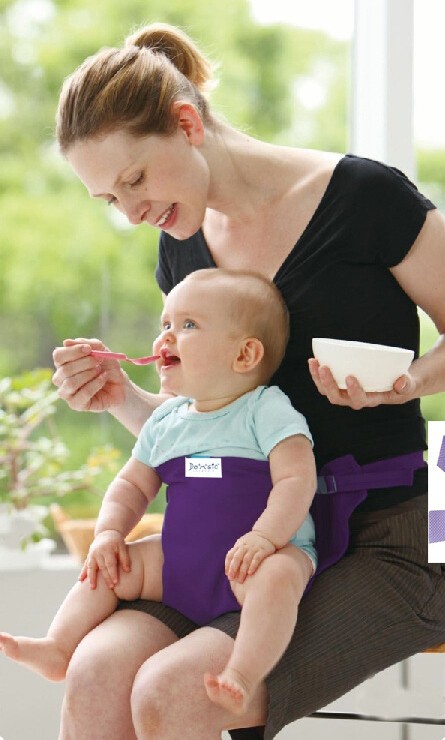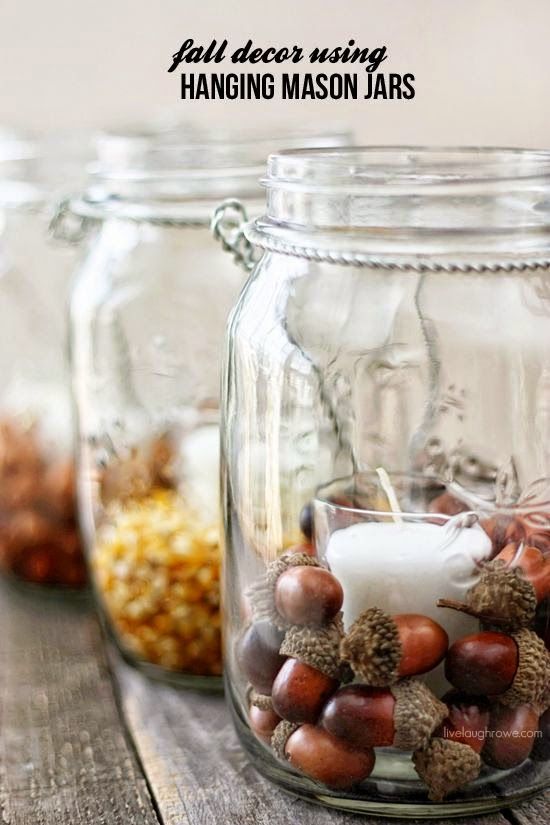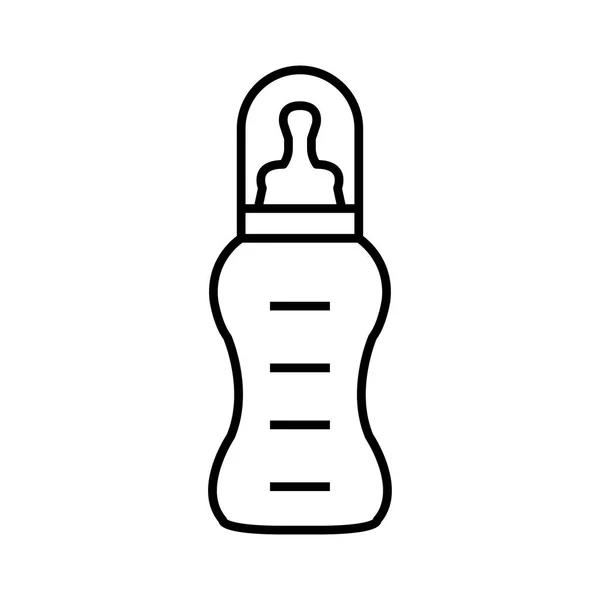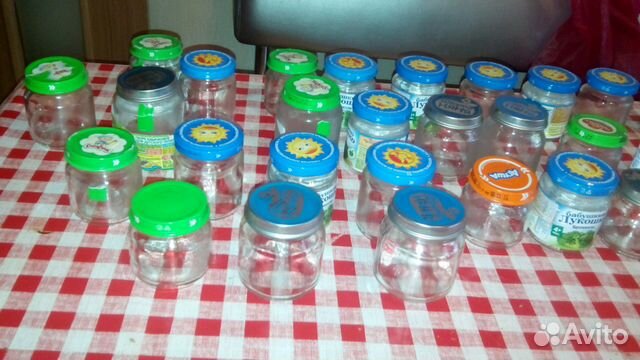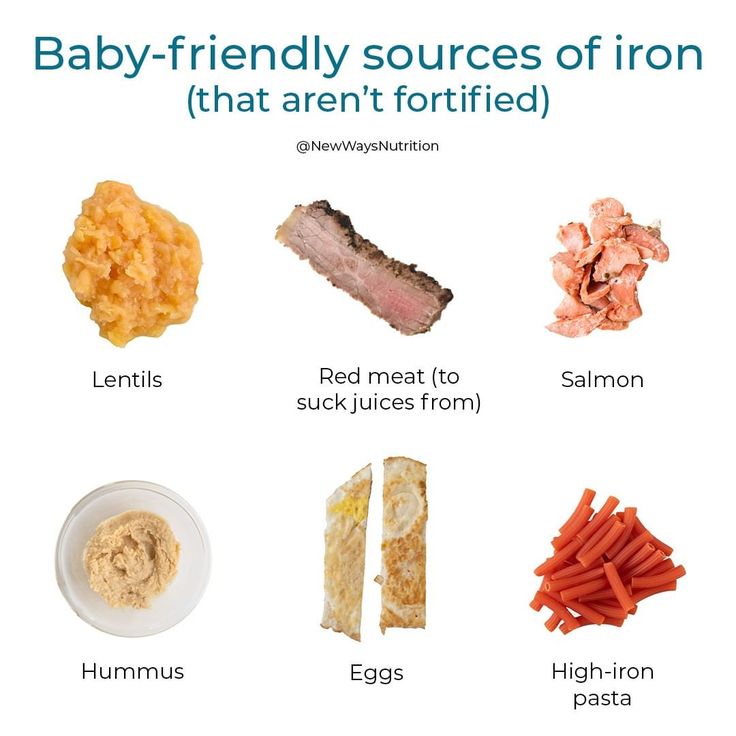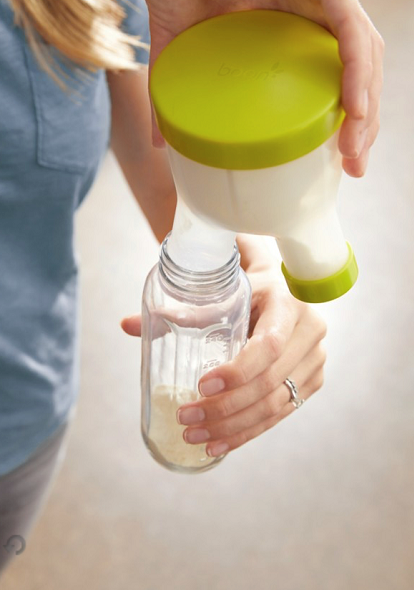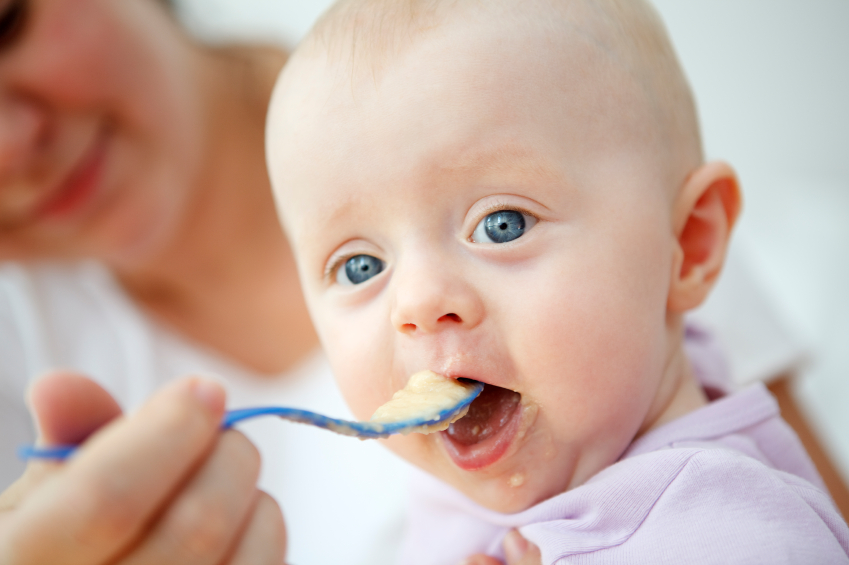How to feed a baby owl
What Do Baby Owls Eat? How To Take Care of a Baby Owl?
What’s This Post About?
Owlets, like other newborn birds, are unique from mature, adult birds. An owlet is a small baby owl that has not yet gained its entire adult plumage and is still reliant on its parents for nourishment, protection, and shelter.
Owlets rarely leave the nest because they cannot provide for themselves, but as they grow older, they will investigate the area surrounding the nesting location and may even be spotted on the ground.
If you see them on the ground, it’s best to leave them alone unless injured. In that case, you should know what baby owls eat and how to take care of them.
Baby owls mostly eat what adult owls of the same species eat, just in smaller pieces. This can include mice, rats, insects, and small birds. Owlets are best left alone, but if you see a wounded or injured owlet, carry it inside your home and immediately call a wildlife rehabilitator.
What Do Baby Owls Look Like?
A baby owl has the same appearance as an adult owl but without feathers and a large beak.
The baby owl has a heart-shaped face, beady round eyes, and a long bill. They are white when they are small, and as their feathers come in, they become cream-colored and brownish in hue. Although some juvenile birds are somewhat different from older birds, the eyes and bill color can also distinguish newborn owls.
Parent owls are reputed to fiercely protect their young, attacking everything they see as a threat, including other species, large mammals, and even people. Therefore, when seeing owlets, observers should use caution and maintain a safe distance to prevent upsetting the young birds or provoking their guardians.
Maturity Of Owl Babies
The rate at which a newborn owl matures is influenced by various factors, including general health, availability of food, and weather. Additionally, varying owls age out of their owlet stage at varied rates and have varying juvenile durations.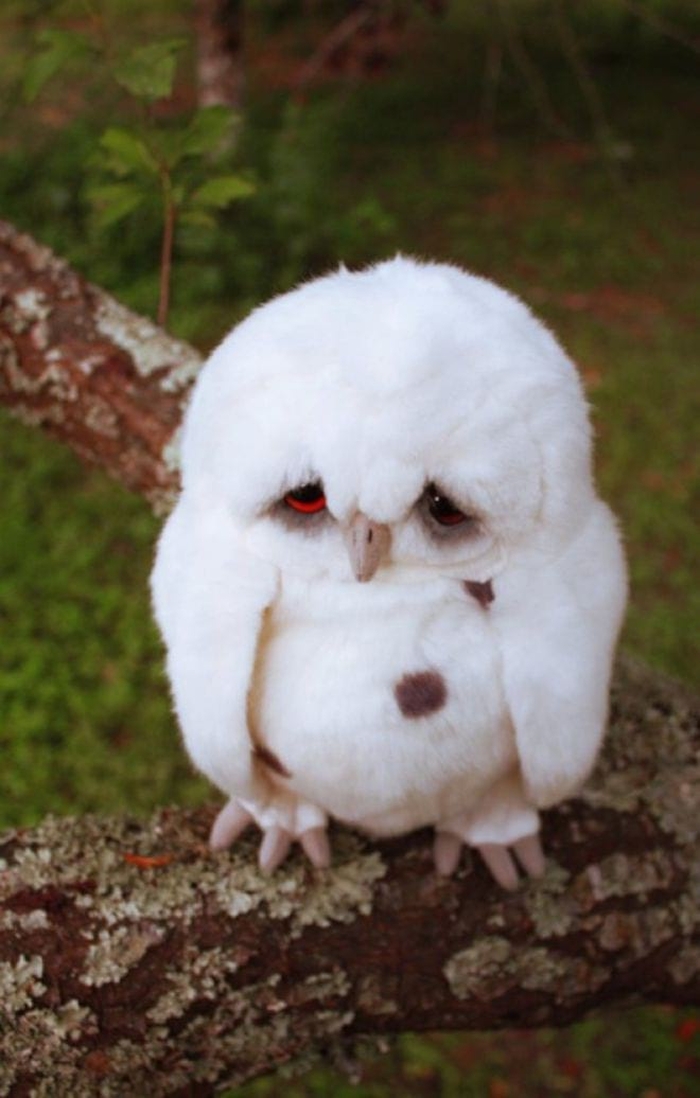
Smaller young owls grow more quickly, and within a few weeks of birth, they may be unrecognizable from adult birds.
On the other hand, larger owl species may take many months to grow out of the owlet phase and achieve complete independence.
DID YOU KNOW?
Barn owls reach the total adult weight and plumage in 2 months!
What Do Baby Owls Eat?
Baby owls eat whatever their parents feed them. Adult owls hunt their regular diet for their offspring and then shred it into tiny chunks so that the baby owl may easily consume it. Therefore, the food of baby owls is almost the same as that of adult owls of the same species.
DID YOU KNOW?
When it comes to eating, the eldest owlet takes precedence over its siblings. The youngest kid will not be fed before the eldest baby owl.
Owls eat a variety of foods. They devour various animals, including small mammals, huge birds, lizards, frogs, and even insects. As a result, baby owls can consume almost any animal as long as the prey is taken apart and ripped apart.
Baby Snowy Owls
Since this owl is capable of hunting both tiny and large creatures, the food of the snowy owl is diverse. Overall, this owl prefers to consume animals that are plentiful in its environment.
Snowy owls mostly hunt shorebirds and ducks in marshlands when the nesting season is over. During the mating season, however, they hunt tiny passerines and shorebirds.
While the younger version of the species will always eat what their parents eat, some observations have focused on quantity. For example, a four-week-old young snowy owl was spotted eating 3 to 9 lemmings every day in captivity, while a newborn snowy owl may consume up to two lemmings each day in the wild.
PRO-TIP
If you want to know what baby owls eat, you must first classify the species and then search for that species' prey list. The diet for the same species of owlet is not different from their adult birds.
Here is a list of things that different owls eat:
| Great Horned Owls | Burrowing Owls | Barn Owls | Barred Owls | Screech Owls |
|---|---|---|---|---|
| Voles | Moles | Field Vole | Mammals (Bats, Rabbits) | Moths |
| Mice | Lizards | Bank Voles | Birds (Doves, Jay) | Beetles |
| Waterfowls | Mice | Small Birds | Insects (Beetles, Crickets) | Scorpions |
| Rabbits And Hares | Beetles | Mice & Rats | Fish | Centipedes |
| Coots | Grasshoppers | Shrews | Frogs | Voles |
How To Take Care Of A Baby Owl?
There’s probably no reason to be alarmed if you come across a baby owl on the ground. However, remember that it is not necessarily abandoned. Before you try to take care of the bird, judge if your assistance is required. Leave the bird alone unless it seems to be hurt, in which case, call a professional.
However, remember that it is not necessarily abandoned. Before you try to take care of the bird, judge if your assistance is required. Leave the bird alone unless it seems to be hurt, in which case, call a professional.
DID YOU KNOW?
An owlet will only remain in the nest for 6 weeks after hatching.
Before you take care of an owlet, you must be equipped with all the necessary information about them. But, one might wonder, what’s worse than leaving an owl without care rather than giving it the wrong care?
Follow this course of action to take care of the owl responsibly:
Evaluate The Reason for The Owlet’s Presence
Baby owls cannot fly, but they may leave the nest to strengthen their wings and legs. They do this by investigating surrounding branches or rocks, climbing, or bouncing around in a process known as “branching”.
Young owls are regularly seen with their siblings, and it is not uncommon to observe multiple owlets together.
They may roost in strange places or even sleep on the ground, oblivious that they are in plain view of predators.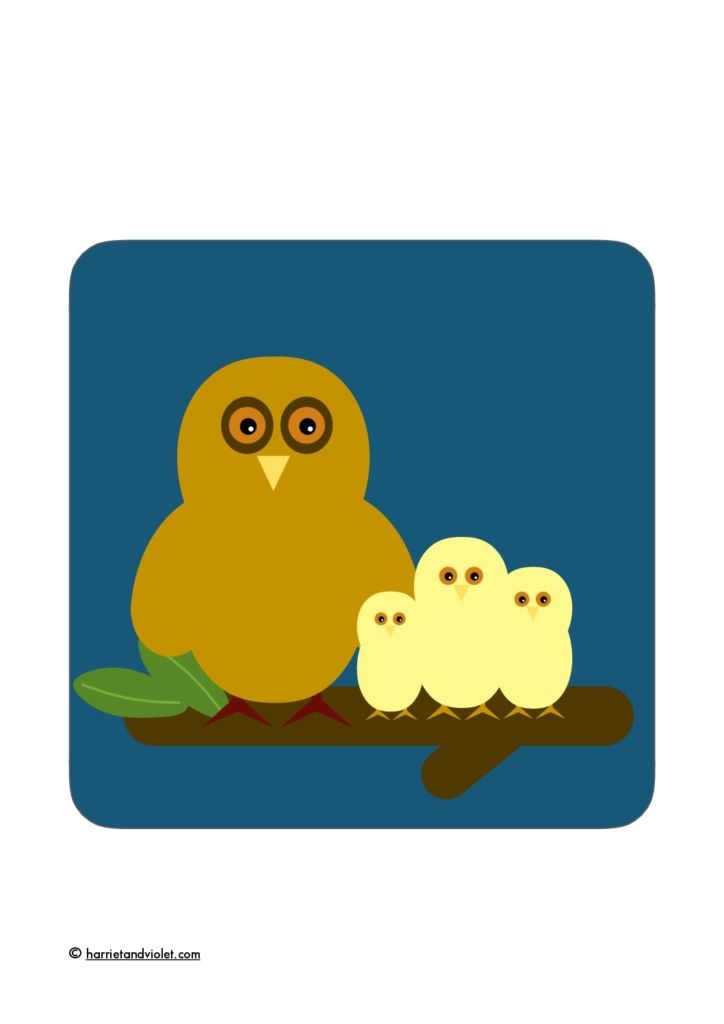 They may be intrigued about surrounding objects, including other species.
They may be intrigued about surrounding objects, including other species.
They may attentively investigate their new environment with their huge, bold eyes, often rotating their heads to see it from several angles.
Assess The Situation
Obtaining information about the details surrounding the discovery can assist you in determining the best line of action. Ask yourself these questions and try to find answers by looking around.
- Where was the owl when it was initially discovered? Was it found right next to the nest? Is it on a concrete floor or loose straw/vegetation?
- Do its wing feathers appear to be long enough to have split its fall in half?
- What kind of weather have you been having? Long periods of rain may prevent the adults from hunting, which means the owlet is more likely to starve.
- Was it discovered outside?
- Is the owlet completely soaked?
- What was the owl’s body posture when it was discovered, and what is it now? Is it upright, squatting, or resting on its back with its feet safely tucked behind it?
Identify The Specie
Once you decide that the answers to all your above questions may indicate the owlet needs help, it’s critical to identify the species.
The best line of action is entirely determined by the type of owl you’re dealing with. Checking the color of the eyes is a wonderful method to tell the difference. Barn Owls, for example, have black eyes and eyelids, whereas tawny Owls have bright pink eyelids.
Check The Maturity of The Bird
If the owlet appears mature, do not engage with the owl but rather flee the location as fast as possible. To check if the owlet is mature enough to be left alone, see if
- is aware of the setting
- has focused eyesight
- can stay upright and wander around
- can extend both wings over his body in defense
If you can spare half an hour for the sake of the owlet’s entire existence, position yourself as far away as possible while still keeping the owl’s approximate location insight - preferably with binoculars. Try and listen for movement around the infant while standing motionless and producing no noise.
Check For Wound Or Injury
Birdwatchers should technically avoid attempting to grab or assist a baby owl on their own, as inappropriate handling could result in even more complications or damage.
While juvenile owls may be unskilled and underdeveloped, their claws and bills are still sharp and strong, and even baby owls can cause serious injuries when agitated or scared.
However, there can be situations where your role becomes necessary. If the owlet is still in the same position after some time has passed, and there is no sign of parents present, you must inspect the owlet itself.
Lay the owlet on its back calmly but firmly, keeping both legs above the toes. Feel for potential fractures in the wings and legs and excessive swelling from dislocation in the joints.
Contact A Wildlife Rehabilitator
Suppose a juvenile owl displays indications of injury, in that case, it’s advisable to seek help from a certified wildlife rehabilitator, a bird rescue center, or other wildlife institutions to ensure the bird’s safety and well-being.
Any fracture or displacement or any other apparent anomaly needs the attention of a veterinarian. The owlet won’t survive without it, and the parent owls, recognizing the disability, could stop feeding it.
Caretakers must be very cautious not to be imprinted by baby owls when hand-rearing them during rehabilitation. Rescuers must go to extremes, such as hiding in plain sight and nursing the infant with forceps placed in the beak of an owl puppet.
Bring The Owl Inside Your Home
Bring the owl inside your house, keep it in a warm, quiet, and enclosed space while you wait for professional assistance. Considering that the owlet was alone for quite a while, it may be hungry. However, if the bird is injured, you should avoid feeding it at the risk of choking.
Understand that owls are unable to chew their food and must swallow it. Baby owls, unlike adult owls, cannot swallow their prey whole; instead, they must be dissected and ripped apart.
As a result, young owls must be fed with little bits of meat. It’s much preferable to give a baby owl one or two chicks or little chunks of small mammals or rodents regularly.
PRO-TIP
Dead mice, rats, chicks, vitamins, and mineral supplements are the most typical owl diet foods.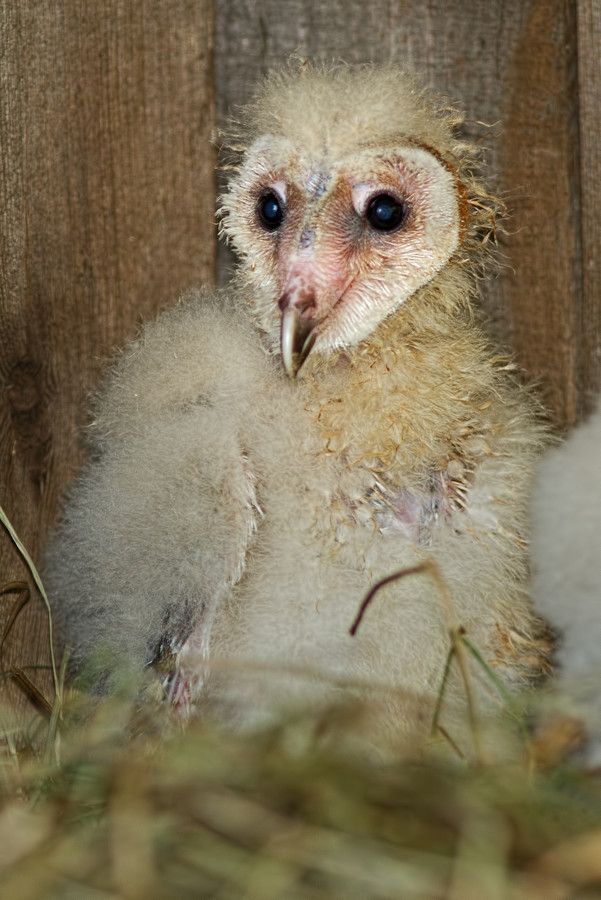
Keep Reading!
Baby owls consume the same foods as adult owls of the same species but in smaller portions. Examples of this are mice, rats, insects, and tiny birds.
Owlets should generally be left alone unless you suspect a wound or injury. First, try to figure out the owlet’s species and maturity to make decisions accordingly. Then, bring it inside your home while you wait for a wildlife rehabilitator to arrive.
Now that you know what baby owls eat and how to take care of them, read to learn about their sleeping habits!
How Do Owls Sleep? Cute Baby Owls Sleep Face Down! (Pics)
Does the thought of how do owls sleep fascinate you? Read this post to find out about their sleeping habits and more.
By David A. Swanson
Bird Watching USA
My name is David and I'm the the founder of Bird Watching USA! I started Bird Watching with My father-in-law many years ago, and I've become an addict to watching these beautiful creatures.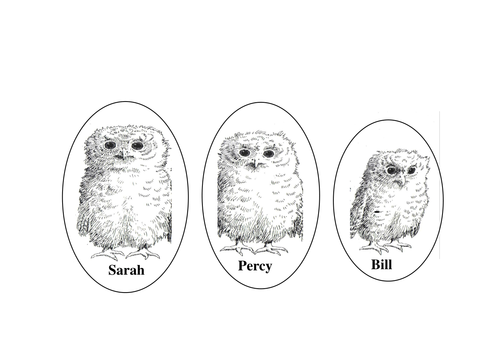 I've learnt so much over about bird watching over the years that I want to share with the world everything I know about them!
I've learnt so much over about bird watching over the years that I want to share with the world everything I know about them!
Posted in:
Raising owls and owlets… – Bird Ecology Study Group
“I have raised pet owls.
“They need roughage in the diet. If the writer is in Malaysia or another ASEAN country, the problem is easier to solve.
“If the writer is in Singapore, it can still be solved, but will cost more money.
“First things first. Is the bird in question an owl or an owlet? By which I mean is the bird currently smaller than about 12 cm (5 inches) and would its adult size be assumed to be less than 16 cm (6 to 7 inches) or is the bird larger than that?
“Insects and lizards make up a large proportion of the diet of the small owls.
“The larger owls eat birds and rodents.
“Now to the feeding. Let’s start with a larger owl. In the old days in Singapore, there were still many poultry farmers, and hatcheries that provided chicks for their business. Not all chicks hatch properly. For very nominal payments, the hatchery owners were more than happy to sell me their deformed chicks which farmers would reject. And in a large commercial hatchery, there are always at least a dozen deformed chicks every week.
Not all chicks hatch properly. For very nominal payments, the hatchery owners were more than happy to sell me their deformed chicks which farmers would reject. And in a large commercial hatchery, there are always at least a dozen deformed chicks every week.
“Simply cut them up, and feed them to the owls, feathers, bones, everything. This will provide the roughage that the owls need. And this will be the diet even after the owls reach adulthood. Sometimes, hatchery owners have bad sessions, and have loads of deformed chicks. In such a situation, those you don’t need today can be frozen for future use. But please ensure that they are properly thawed and served at room temperature to the owl.
“If you do not have a supply of deformed chicks, then there is something else that works, but only as an interim measure. If you have a pet cat or dog, you can comb it out, cut up the hair, and roll it together with chicken flesh before feeding this to the owl. I must admit that this is not an ideal solution, but it might stop your owl’s stomach troubles until something better comes along.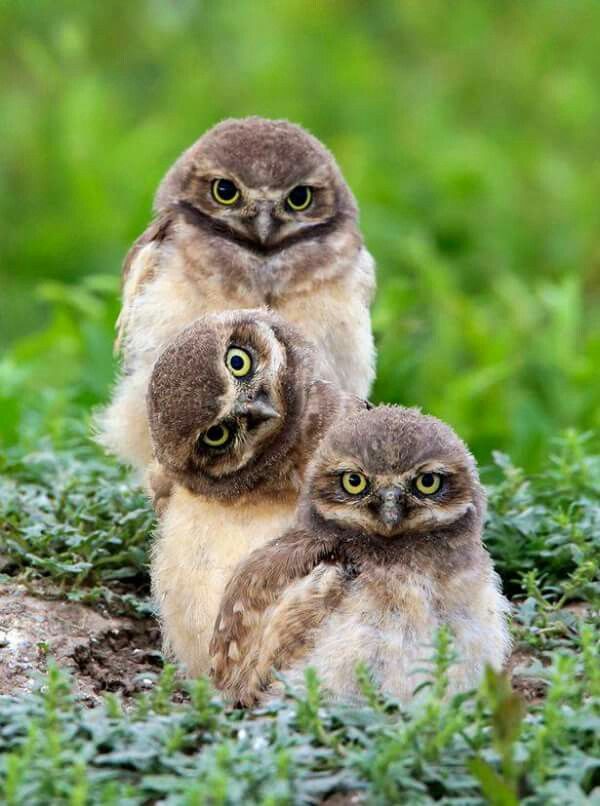
“But please make absolutely sure that there are no grooming conditioners, insecticides, or flea shampoos in the hair that you intend to feed to your owl.
Buffy Fish-owl (Ketupa ketupu) chick – Photo by Johnny Wee“Now, if you have a little owlet, you feed it with some meat (with hair, skin and bones attached) but the bulk of the diet should comprise insects. Fortunately, crickets are now bred on a commercial basis, and most bird shops sell them.
“The crickets are usually not in good condition when you buy them from the shop. The pet shop owners don’t want them defecating and urinating to mess up their displays, so they have minimal food and drink before being sold. They are therefore malnourished and not very nutritious.
“For the long term, you need to feed your owlet with well-fed insects. I have found that a mixture of high quality chicken food and fish food fattens crickets very well. And for moisture, I give them orange slices. This also provides Vitamin C.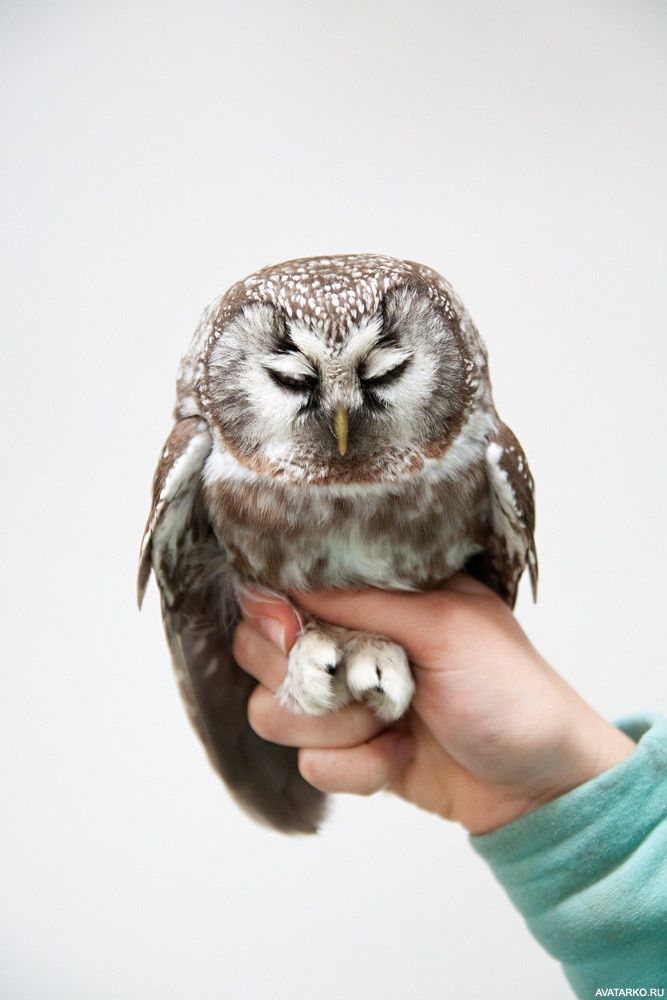 Don’t worry, it is not expensive. Crickets are small, and even a hundred of them take a week to finish a single orange.
Don’t worry, it is not expensive. Crickets are small, and even a hundred of them take a week to finish a single orange.
“My system for my songbirds is to buy crickets and fatten them for a week, then only feed them to the birds in the second week, while a new batch of crickets is being fattened.
“Songbirds have no problems with catching and killing their own crickets. For a baby owlet, you might have to kill the crickets. The way to do so is to put them in a bottle, and put the bottle in the freezer. But make sure that the crickets are thawed to room temperature before offering them to the owlet.
“I have to mention superworms and mealworms. These are the larvae of beetles, and are sold in pet shops for feeding birds. Some aviculturalists have reservations about using them as bird food, but I find that they are OK as long as you are very careful.
“First, like crickets, they are usually malnourished when they arrive in the shops, packed in oatmeal. You have to fatten them with chicken feed.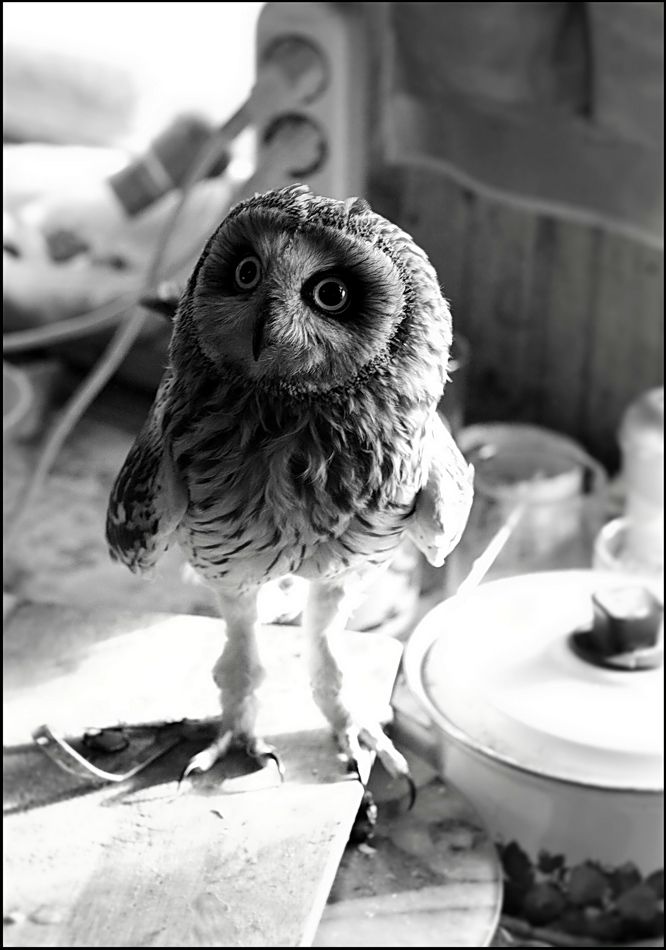
“Second, they are full of starch, and do not make for a good, balanced diet. They should never be the staple diet of your bird, but can only be served as side dishes.
“And third – absolutely the most important point. They can kill baby birds. Adult birds know how to make sure that the worms are truly dead before consuming them. Baby birds do not know this. The worms do not die immediately when swallowed, and can continue biting to damage the intestines of the baby birds.
“Make sure that mealworms and superworms are well and truly dead before you feed them to baby birds. You can kill them the same way you kill crickets, or you can simply cut the heads off with scissors.
“If you feed the owl or owlet with a diet that contains enough roughage, the stomach should stop running, and it will soon start to cast pellets. This is nothing to be alarmed about. It is absolutely natural for some types of birds to vomit out the undigestible parts of their meals a short while after eating.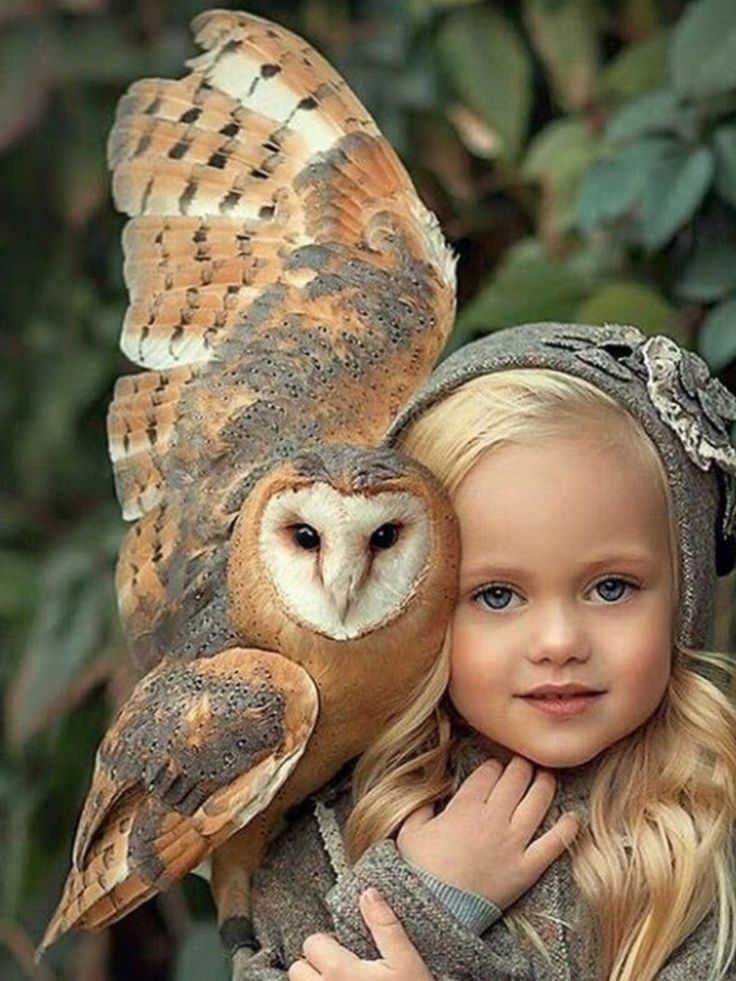 But it is these indigestible parts of the meal, which must be included in the diet, that allow the stomach to function properly.”
But it is these indigestible parts of the meal, which must be included in the diet, that allow the stomach to function properly.”
Lee Chiu San
Singapore
24th November 2017
Note: The above is in response to Chrystal’s comment “I rescued a baby owlet, the eyes only opened a week ago, i cut meat and liver into tiny pieces with a little water to feed it, but i have noticed that its having a runny tummy and I don’t know what to do, can someone please give me advice asap please I don’t want to lose the owlet!.” See HERE.
Chrystal wrote on 25th November: “Thank you sooo much, I appreciate the fast response, I caught some lizards yesterday, cut them into pieces and the owlet ate it as if it was pudding, I see that its stomach is much better now, I’ll keep in touch. Attached is a photo of the owlet (above). Thank you all once again.”
Feeding little owlets: bjorn_varulv — LiveJournal
Owlets are born covered in white down and blind.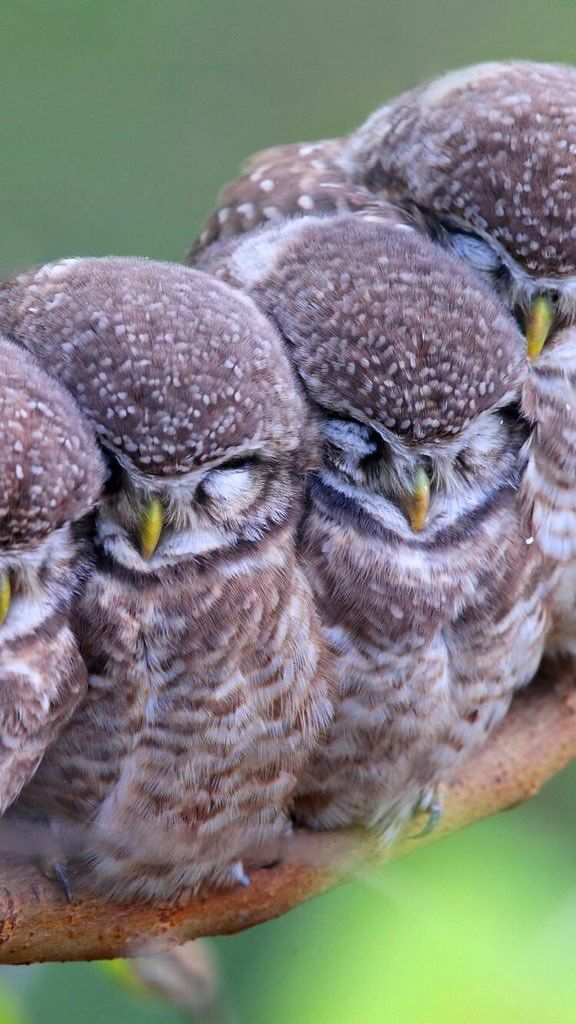
Feeding such an owlet is a difficult and responsible task. It is better if specialists do this, but specialists in feeding owls are a very rare thing in the world and in our country in particular. There are almost no correct recommendations on the Internet, and those that are, unfortunately, are most often based on information copied from each other and contain the same errors. Which in the end can lead to the death of the chicks.
It must be understood that owls have a very specific digestion, which is different from the digestion of other birds of prey. And advice on rearing diurnal predators is not good for owlets, if only for the simple reason that owlets, unlike falcons and hawks, do not have goiter. Their digestive system is arranged differently, so it is important to listen to the recommendations of an experienced specialist in owls, and not in birds of prey in general.
The photo shows a Tawny Owl owlet just hatched from an egg.
How to maintain?
Newborn owlets need constant heating: the temperature should be maintained at about 37 degrees Celsius. Owlets can be placed, for example (as the simplest option), in a "nest" made of a box and a terry towel, and heating is carried out using a 40-60 W incandescent lamp, after setting it at such a distance from the nest to provide the desired temperature. It is dangerous to both overheat and overcool the chicks.
Owlets can be placed, for example (as the simplest option), in a "nest" made of a box and a terry towel, and heating is carried out using a 40-60 W incandescent lamp, after setting it at such a distance from the nest to provide the desired temperature. It is dangerous to both overheat and overcool the chicks.
How often to feed?
Owls need to be fed very often during the first few days. If these are small species of owls, such as splyushki or owls, you need to feed every half an hour with a break for a night's sleep no longer than four hours. Larger ones, such as Tawny Owls, Long-eared and Short-eared Owls, need to be fed every hour with a break for a night's sleep of no longer than five hours. As you grow older, the frequency of feeding should be reduced. Monthly owls are enough to feed 5-6 times a day.
You should always feed when the owls require food. Until full saturation. Owlets eat a lot and a lot. For example, a week-old eared owl owlet eats five or six quail breast fillets per day, that is, about half of its own weight.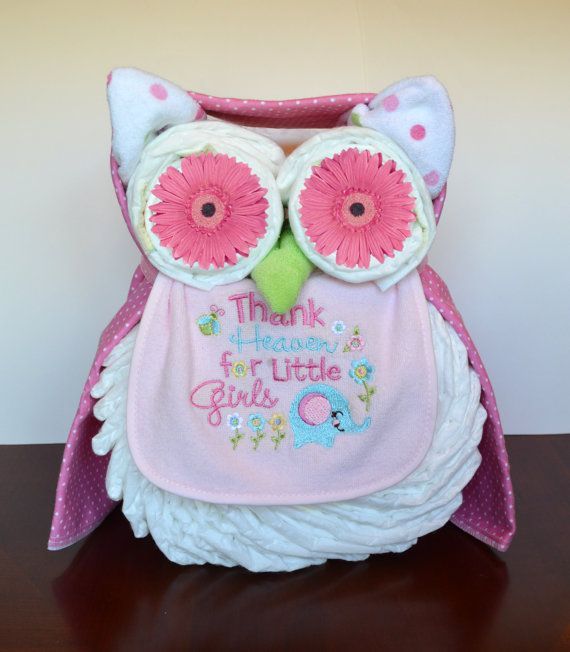
The main rule: it is impossible to overfeed the owlets! But underfeeding - easily.
What to feed?
Owlets grow rapidly and the slightest mistake in the diet and diet instantly affect their health.
Owl food must be nutritious and contain sufficient amounts of essential vitamins, trace elements, minerals and amino acids. An ideally balanced food for owls in this respect is the meat of domestic quails. This meat contains a lot of calcium, which is extremely important for the body of owls, especially in the first days of life.
Almost all advice on feeding owls that can be found on the Internet contains a serious mistake: they recommend feeding owls with meat with bones and hair, regardless of the age of the owlet.
But the fact is that the body of very young owlets is not yet able to get rid of undigested parts of food, that is, newborn owlets are not able to form and shed a pellet.
The mother owl feeds her newborn babies by carefully choosing the meat, pinching off small pieces like with tweezers.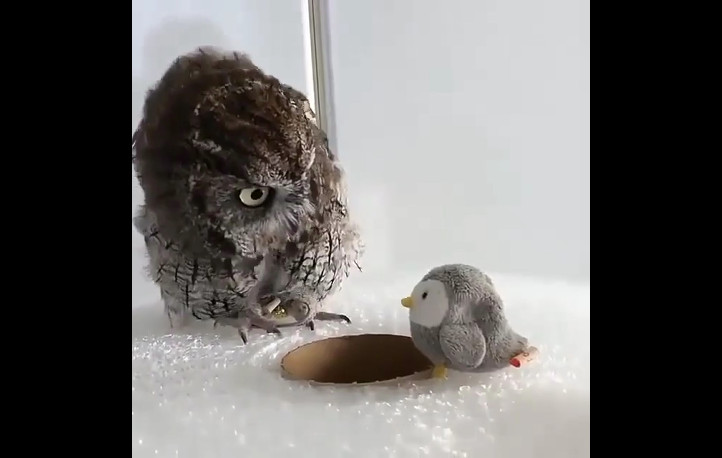 The first few days of life, owls need to be fed with muscle fibers alone, and quail breast fillets are best suited for this purpose. When the owls begin to open their eyes, you can gradually start feeding pieces of meat with a small amount of wool, fluff and small, not hard bones. To begin with, you can feed the owlet a quail neck cut into pieces, and then be sure to wait for the owlet to drop the pellet. This should happen within six to eight hours of feeding the first meal with solids. During this period, you need to continue to give only muscle fibers. If there are no pellets during the day, you can give another quail neck or a similar small amount of small, not sharp bones and wool or fluff, and wait again. If the pellet does not appear for the second time, it is necessary for another two or three days not to give food with solid particles, to feed only soft ones. During this time, the owlet will grow up and his body should begin to cope with the removal of undigested particles to the outside.
The first few days of life, owls need to be fed with muscle fibers alone, and quail breast fillets are best suited for this purpose. When the owls begin to open their eyes, you can gradually start feeding pieces of meat with a small amount of wool, fluff and small, not hard bones. To begin with, you can feed the owlet a quail neck cut into pieces, and then be sure to wait for the owlet to drop the pellet. This should happen within six to eight hours of feeding the first meal with solids. During this period, you need to continue to give only muscle fibers. If there are no pellets during the day, you can give another quail neck or a similar small amount of small, not sharp bones and wool or fluff, and wait again. If the pellet does not appear for the second time, it is necessary for another two or three days not to give food with solid particles, to feed only soft ones. During this time, the owlet will grow up and his body should begin to cope with the removal of undigested particles to the outside.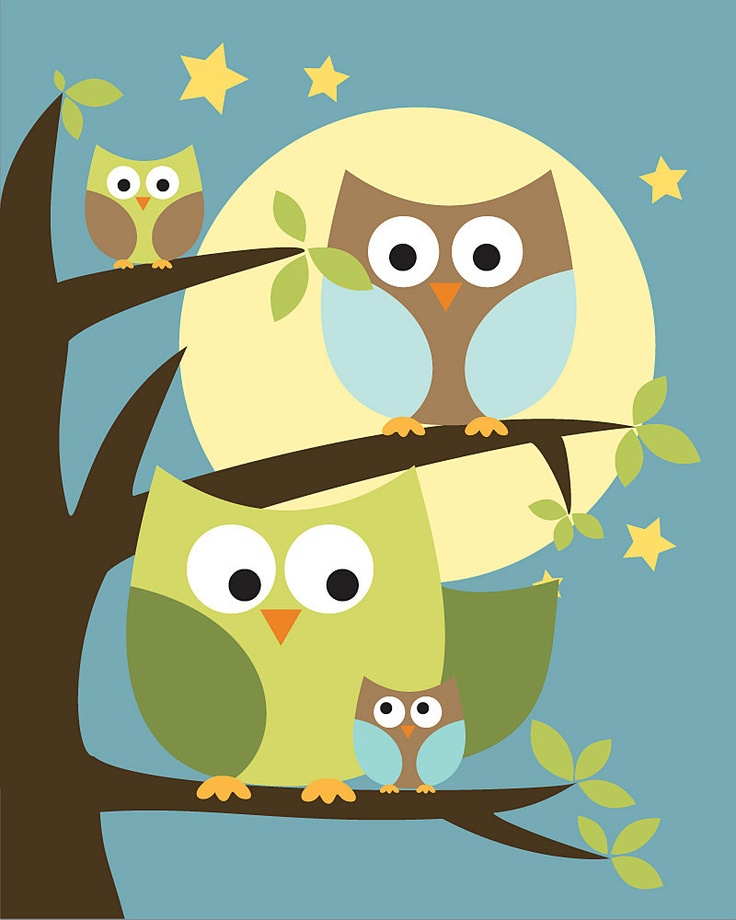
The same rule applies to weakened owlets who, for some reason, lag behind in development. Recently, there was a case when people who had never fed owls undertook to feed the owls. Newborn owlets were fed too infrequently and insufficiently nutritious food, which soon led to intestinal atony in one of them. Then the weakened owlets began to be fed with chickens cut into pieces - along with bones and fluff. Two of the four owls were severely retarded in development, and one also had characteristic fractures of both legs and wings, which happen when the chicks are clumsily picked up, lifting by the limbs for fear of crushing. The organisms of these babies could not cope with the formation of the pellet, and although the people who fed them saw that there were no pellets, they continued to give pieces of chicken with bones and fluff, believing that maybe the bones were being digested. As a result, weakened babies died, painfully trying to burp the bones accumulated in their bellies - the first at the age of 7 days, the second at 10.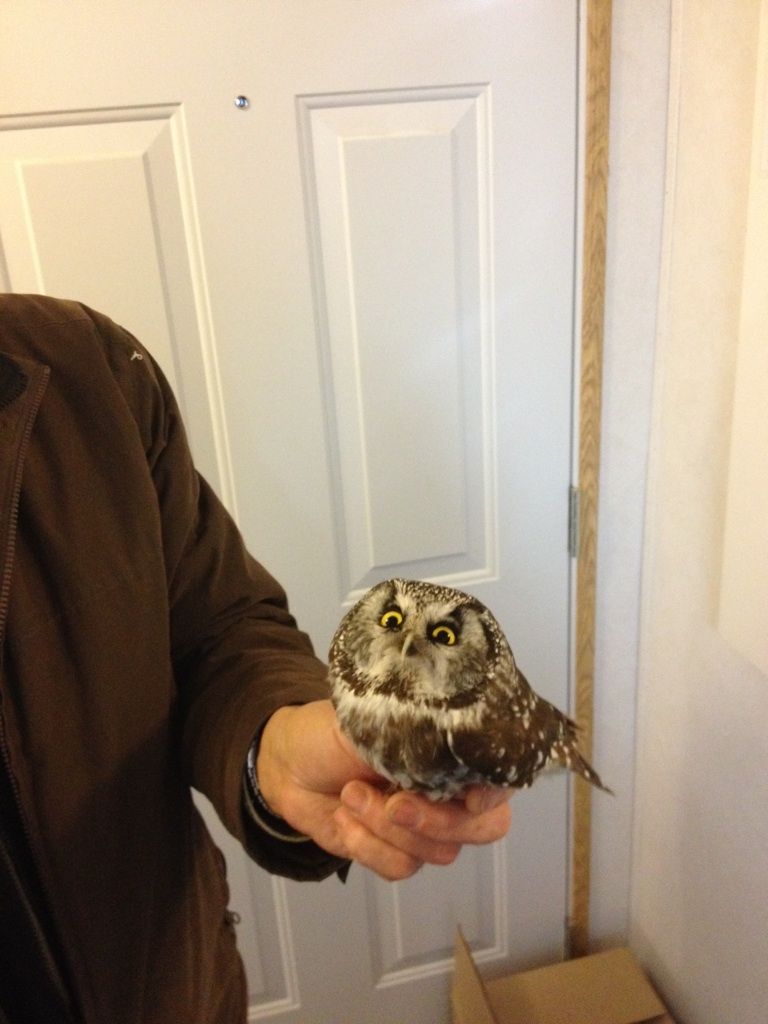 The third baby also began to lag behind in development, fell ill with rickets, but still he was larger and stronger and after a while pushed out the accumulated in the stomach a lump of bones and chicken down. And only one of the four developed normally, perhaps because initially he received more food and this allowed his body to cope with the test.
The third baby also began to lag behind in development, fell ill with rickets, but still he was larger and stronger and after a while pushed out the accumulated in the stomach a lump of bones and chicken down. And only one of the four developed normally, perhaps because initially he received more food and this allowed his body to cope with the test.
When should one start feeding "normal owl food"? The rule is this: if the owlet does not lie, but sits confidently, actively tries to swallow his fingers when they touch the beak, if his eyes have already begun to open, you can give a quail neck and wait for the first guess. This is like an indicator of whether the owlet's body is ready for coarser food.
Rougher food is newborn mice, minced quail, ground together with bones (tubular bones must first be removed so that sharp fragments do not form!), adult mice cut into pieces. A little later, you can start giving pieces of day-old chickens - there are fewer nutrients in such feed, and there are a lot of bones and fluff.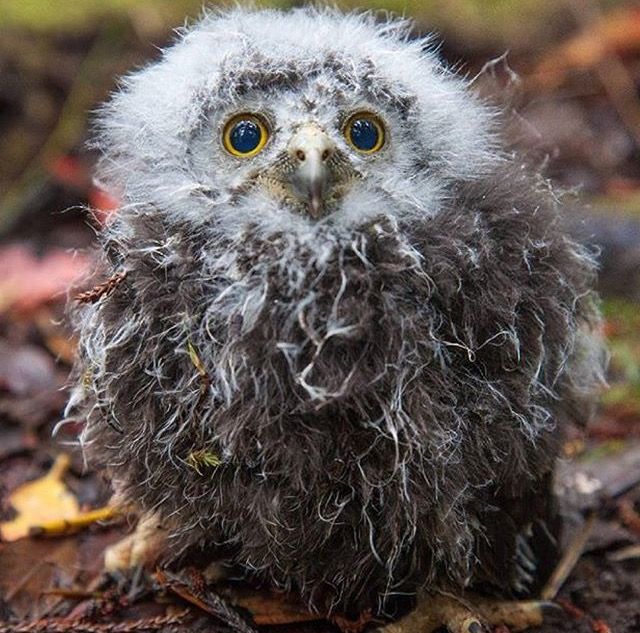
At the age of one month, the owlet should already receive ordinary owl food, that is, for example, owl owlets are able to swallow small mice whole.
(Of course, we are not talking about feeding owls with live animals - as well as adult owls kept in captivity.)
Do I need to drink water?
Owlets need to get enough fluids so that their kidneys can successfully excrete harmful substances formed during the life of the body. You need to water the owls carefully so that the owlet does not inhale the liquid. You can give water drop by drop from a pipette on the side of the beak, but the easiest way is to dip pieces of food into the water before feeding them.
What about vitamins?
When feeding an owlet with quality food, such as meat of domestic quail, additional vitamin preparations are not required. It must be remembered that synthetic vitamins are easy to overdose, and an overdose of vitamins is more dangerous than their lack.
As a natural source of vitamins, it can be recommended to feed raw chicken liver to owlets once a day.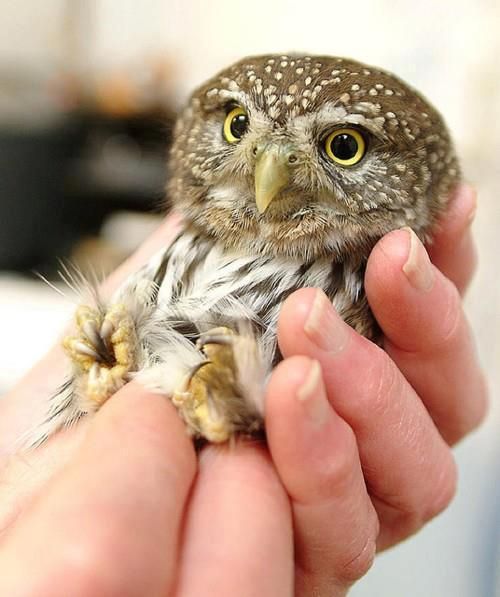 This is quite enough to maintain balance, synthetic vitamins for the prevention of beriberi do not need to be used.
This is quite enough to maintain balance, synthetic vitamins for the prevention of beriberi do not need to be used.
Since a growing body requires a lot of calcium, it is recommended to use the Calcium-Sandoz drink as drinking water. Tablets for the preparation of this drink are sold in a human pharmacy. They must be diluted at the rate of a quarter tablet per 100 ml of water, and of course you need to wait until the gas comes out. You can start giving your owlet this drink in place of regular water from a week old until its plumage is fully formed.
It is very important for a growing owlet to receive a sufficient amount of ultraviolet light every day, because under its influence the body produces vitamin D, which promotes the absorption of calcium. It is best to provide the owlet with a safe stay in sunny penumbra, for example, the “nest” should be covered with two or three layers of cotton tulle and in this form you can sunbathe the owlets for two to three hours a day. Of course, you need to remember that owls should not be left unattended on a balcony or in a personal plot. But I will write a separate article about security.
But I will write a separate article about security.
And remember that foster owlets should not be released into the wild! They cannot be released even if they were "trained to hunt" at home, that is, they were baited on live mice. Anyway, in nature, such owls have no chance to survive and adapt to a normal life.
So please don't feed the owls with live animals, don't teach them to kill, they don't need it, and this is unnecessary cruelty.
I wish good luck to all bird rescuers and health to your pupils!
What do owls hunt and what do they eat in nature and what kind of food do they eat at home? Many people like it so much that they decide to have a feathered pet at home. It will be especially useful for them to know what owls eat. However, other bird lovers will also be interested in understanding the issue.
Contents
What does an owl eat in nature
It is quite difficult to answer this question. First of all, due to the fact that there are about half a thousand of them, and many have certain preferences. They live in different climatic zones, have different sizes and habits. In addition, the diet of owls can vary significantly depending on the time of year. That is, in summer the same bird eats something completely different from what it eats in winter.
They live in different climatic zones, have different sizes and habits. In addition, the diet of owls can vary significantly depending on the time of year. That is, in summer the same bird eats something completely different from what it eats in winter.
In the spring-autumn period
In the warm season, the diet of these birds is quite extensive. Who does the owl eat? It feeds on a wide variety of animals, birds, and insects—practically anything that is small enough to be unable to defend itself. But still, there are certain subtleties here. For example, the eagle owl prefers birds and fish. But the diet of the needle-footed owl, which lives mainly in warm countries, consists exclusively of insects.
Hunting owlIn the forest in winter
Winter is a difficult season for wild birds. Insects die or hibernate. Many birds fly to warmer climes. It is already almost impossible to find animal cubs, and many rodents that make up a decent part of the owl diet hibernate.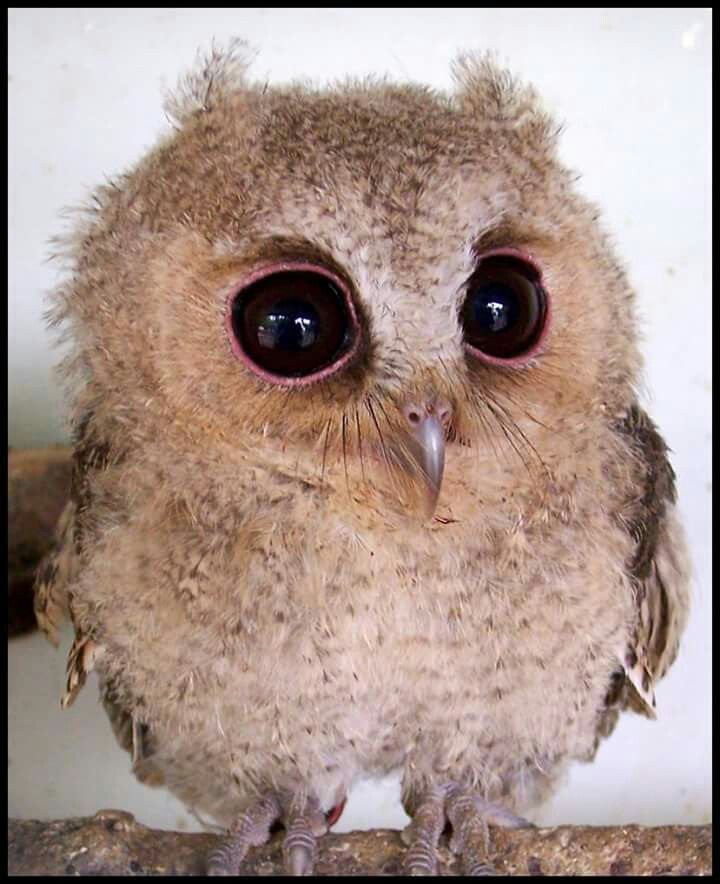 There is much less food, so the birds eat any prey they can catch.
There is much less food, so the birds eat any prey they can catch.
Primarily small birds and small rodents. Predators prey on mice, often snatching them out of the snow right on the fly. If a successful hunt has not been given out for several days, then the bird can also attack quite large prey. For example, there are videos and photos on the network that show how a relatively small owl eats a hare, which is not inferior in weight to it.
This is interesting! Owls can rotate their heads 270 degrees without harm.
In some species, the food is approximately the same all year round. For example, in a white or polar owl. She lives in the tundra, where even in summer it is rarely warm. It will not be possible to catch a large number of insects here, therefore, birds have to eat rodents, for example, lemmings, almost all year round.
What species of owls hunt fish
Quite often, bird lovers are interested in the question of whether owls eat fish.:no_upscale()/cdn.vox-cdn.com/uploads/chorus_asset/file/3362504/owlweighing.0.jpg) It turns out that for some species, it is fish that is the main source of calories. But they are relatively few. First of all it is:
It turns out that for some species, it is fish that is the main source of calories. But they are relatively few. First of all it is:
- Red fish - lives only in West Africa, for example, Liberia, Ghana, Guinea and some other countries. Red plumage and dark brown eyes distinguish it from a number of relatives.
- Striped fish - also lives in Africa, but it can be found in almost all parts of the continent. The bird is very large - the wingspan is up to one and a half meters, and the weight is up to 2.3 kg.
- The fish owl is the largest bird in the entire owl family. It lives only in Japan, as well as in the Far East. Their method of hunting is interesting - they fly low over the water, snatching gaping fish. Unlike most of the "relatives", the eagle owl hunts not only at dusk, but also during the day.
What does an owl eat if it lives on the coast? Many species do not disdain mussels, crabs and fish thrown ashore.
Do owls eat plant foods
Ornithologists still cannot definitively answer this question. On the one hand, in tropical countries you can often see how raptors feast on exotic fruits. On the other hand, it is not clear whether such birds as the tawny owl or the scops owl eat plants. After all, their diet is mainly studied by litter - in it you can see bones, wool, insect shells and other remains of the victims. But plant food, if it is in the diet, is digested completely.
On the one hand, in tropical countries you can often see how raptors feast on exotic fruits. On the other hand, it is not clear whether such birds as the tawny owl or the scops owl eat plants. After all, their diet is mainly studied by litter - in it you can see bones, wool, insect shells and other remains of the victims. But plant food, if it is in the diet, is digested completely.
Interesting fact! Elf owl is one of the smallest in the family - its body length is not more than 14 cm and weighs up to 45 g.
But the fact that owls are able to digest cereals, grass and fruit pieces is beyond doubt. We have already discussed above what owls eat in the forest, in the meadows and in the tundra. Mostly they are rodents. They feed on seeds and grass. Of course, when eating rodents, the predator swallows the contents of their stomachs along with them. Therefore, ornithologists, not without reason, believe that birds receive all the necessary vitamins, carbohydrates and other nutrients necessary for normal development from the contents of the stomachs of their victims.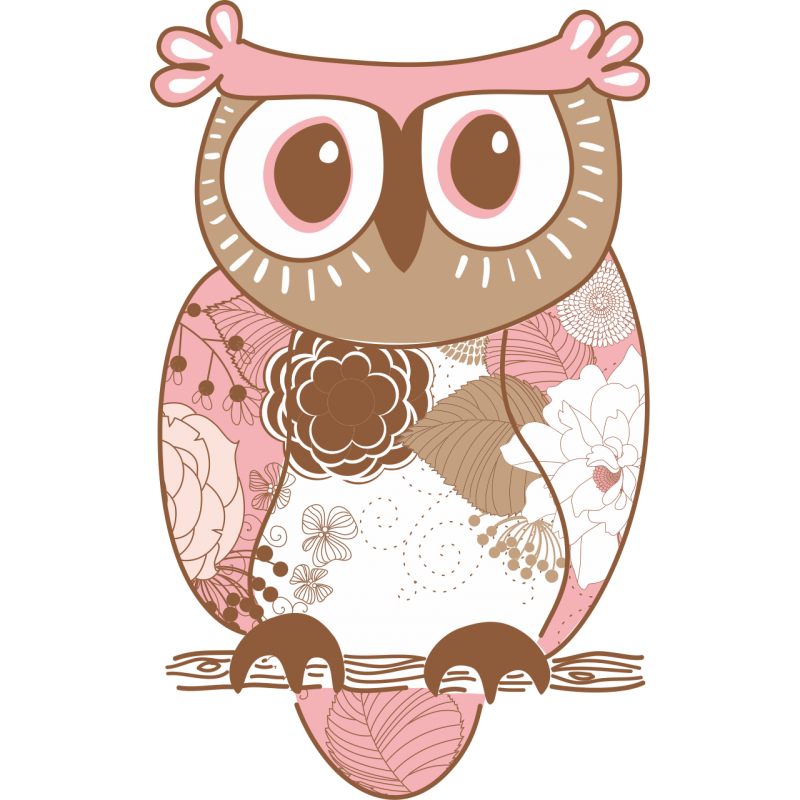
What owls eat
It is well known that owls do not feed their offspring with semi-digested food, as some other birds do. But the chicks still cannot eat meat. In addition, meat does not contain enough calcium - and it is very important for the normal development of the skeleton.
Miniature Elf OwlThat is why, in the first days of life, owls bring only insects to their chicks. Their size depends on the type of owl and the region of habitat. For example, some feed the young with ants, grasshoppers, and moths. Others do not disdain centipedes, spiders and even scorpions. For example, the tiny elf owl (also known as the cactus owl) often brings scorpions to feed its offspring. True, so that the prey does not harm the offspring, the sting is carefully torn off.
Food for owls at home
Before breeding owls in captivity, it is imperative to understand what owls eat at home. And after that, evaluate your capabilities, whether it will be possible to provide the pet with a suitable diet.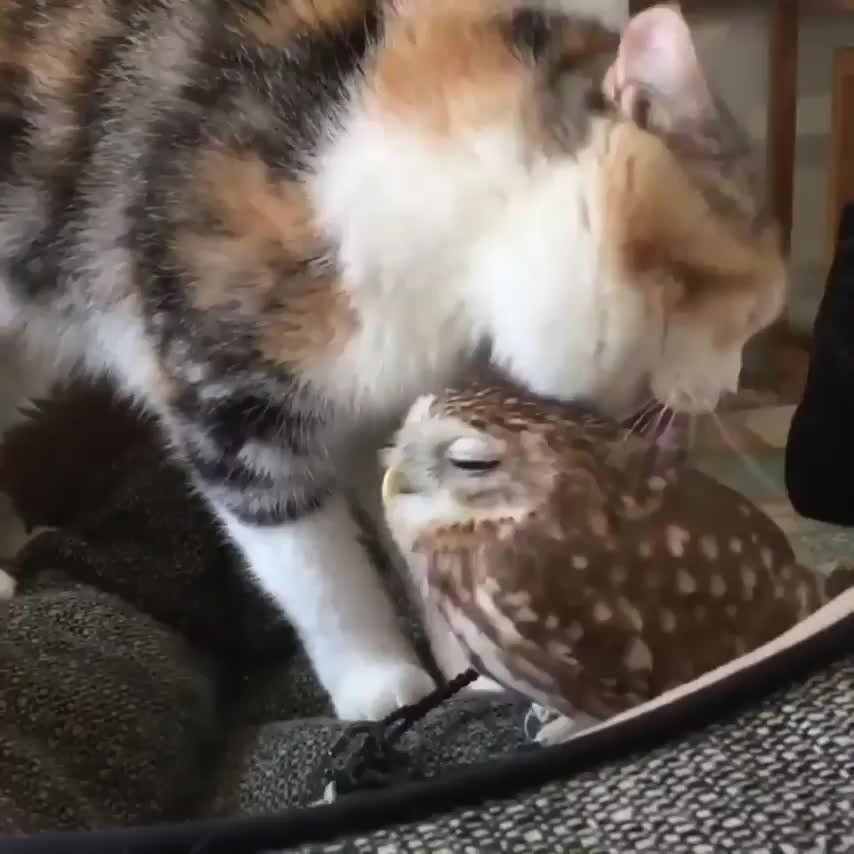
It is especially difficult to feed wild birds in unaccustomed conditions. You need to protect your face and hands, and then just push small pieces of fresh meat into the birds. The task is not easy, but this is the only way to keep them from dying of hunger. Of course, everything must be done very carefully so as not to harm the feathered pet. In a few days, the bird will realize that living in a cage has certain advantages - ranging from safety to plentiful food that does not need to be obtained at the risk of life.
Note! Most owls kept in good conditions live 2-5 times longer than their wild relatives.
You can't feed birds with meat alone. Ideally, they should be fed exclusively the food they are used to in the wild. Mice and small birds like sparrows and starlings are excellent choices for most raptors. Few people can provide them with such food, but it is impossible to completely refuse it.
Therefore, four days a week, owls can be fed meat - it is best to cut it into small pieces. The main thing is that it should not be minced meat - a powerful owl's beak is simply not intended for such nutrition, as well as clawed paws.
The main thing is that it should not be minced meat - a powerful owl's beak is simply not intended for such nutrition, as well as clawed paws.
Two more times a week they need to be fed with mice - live or previously killed. A couple of mice a day is enough to make the average owl feel happy.
Finally, the seventh day should be done as a fasting day so that the owl does not gain excess weight due to lack of activity.
It is also advisable for owls to sometimes throw feathers of any birds into the cage. If they feel a lack of calcium, they will gladly eat them, and at the same time cleanse their stomach.
Who can eat an owl
The answer to this question largely depends on the region where birds live and their size. For example, if a splyushka or an owl-elf gets caught by a larger predator, then he definitely will not miss the opportunity to feast on fresh owl meat.
Curious! While diving for prey, some owls can reach speeds of up to 80 km / h, while flying completely silently.

